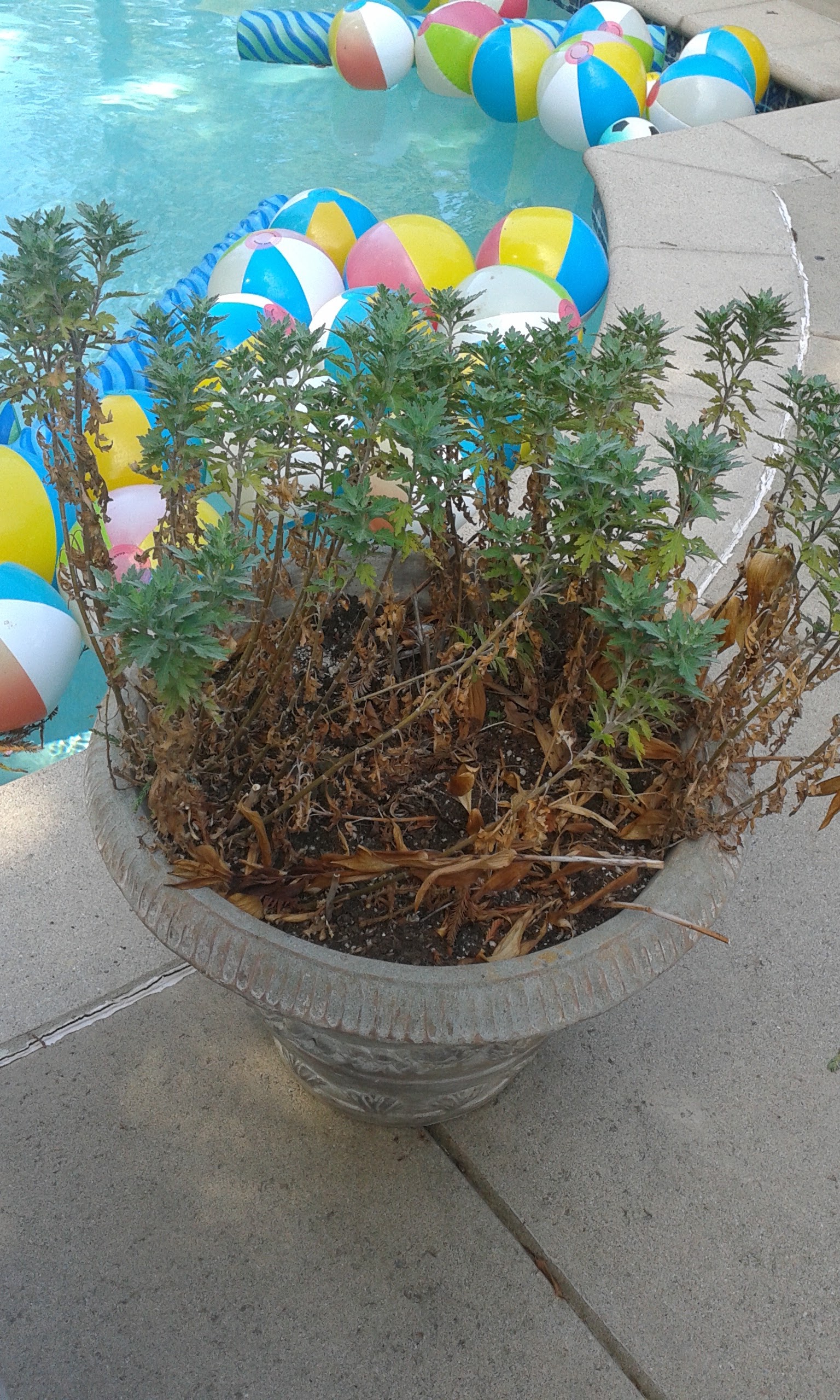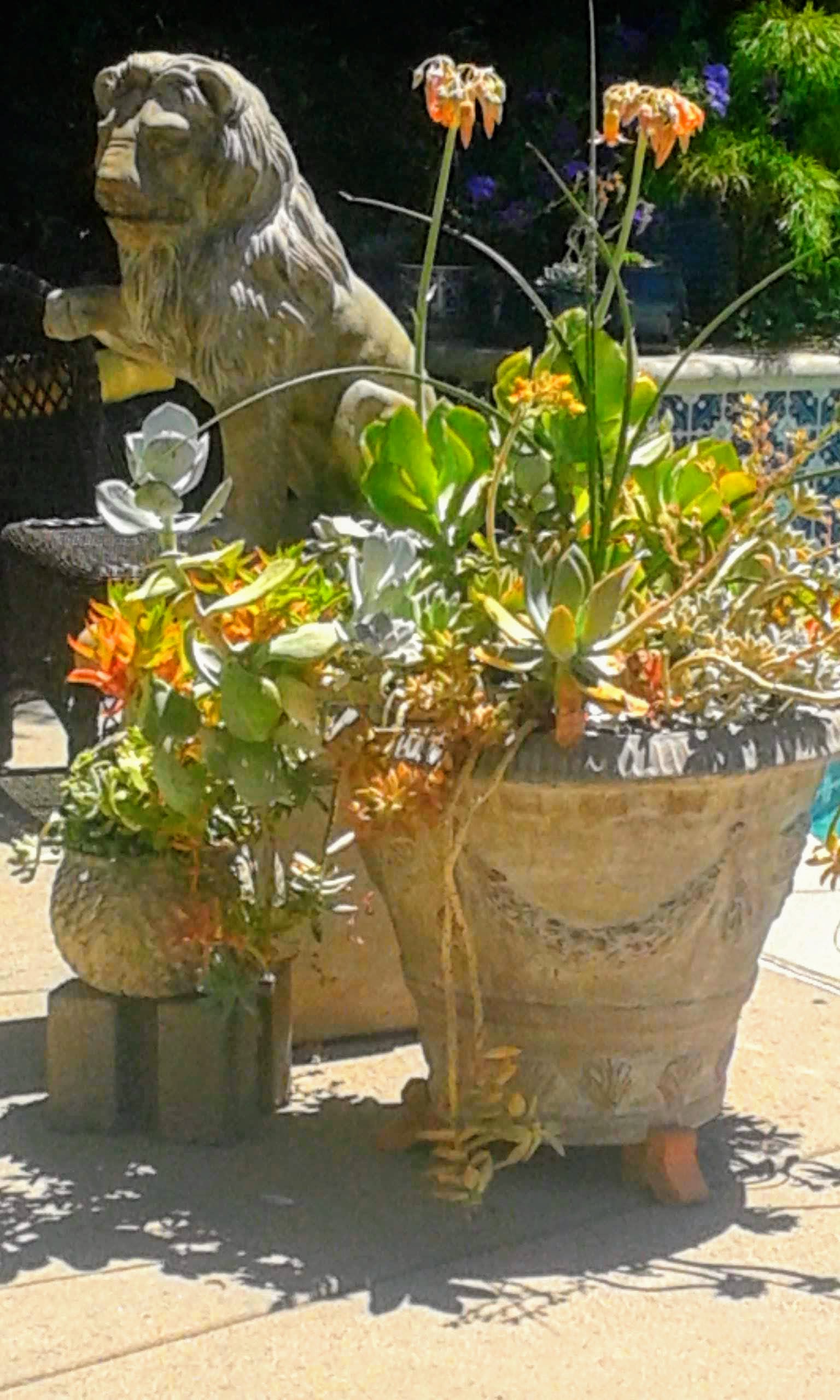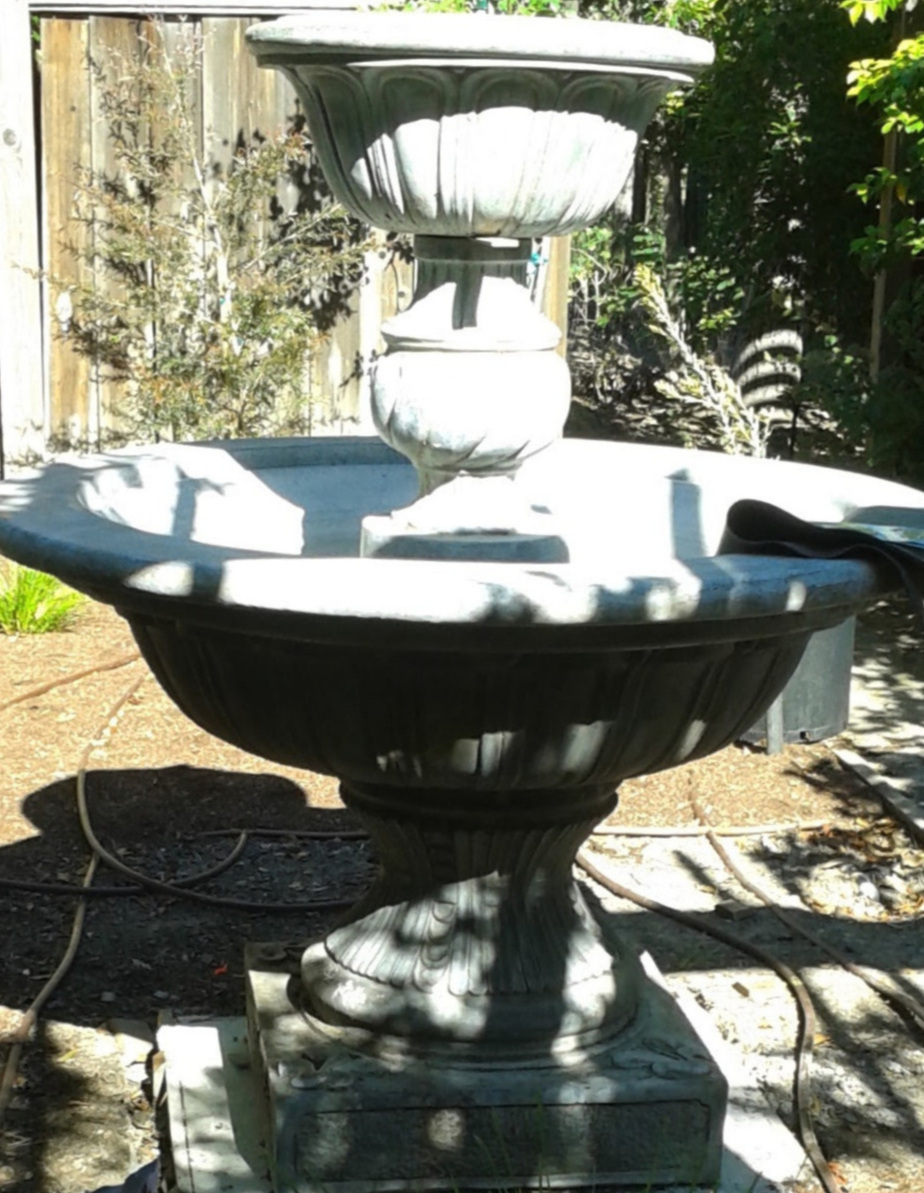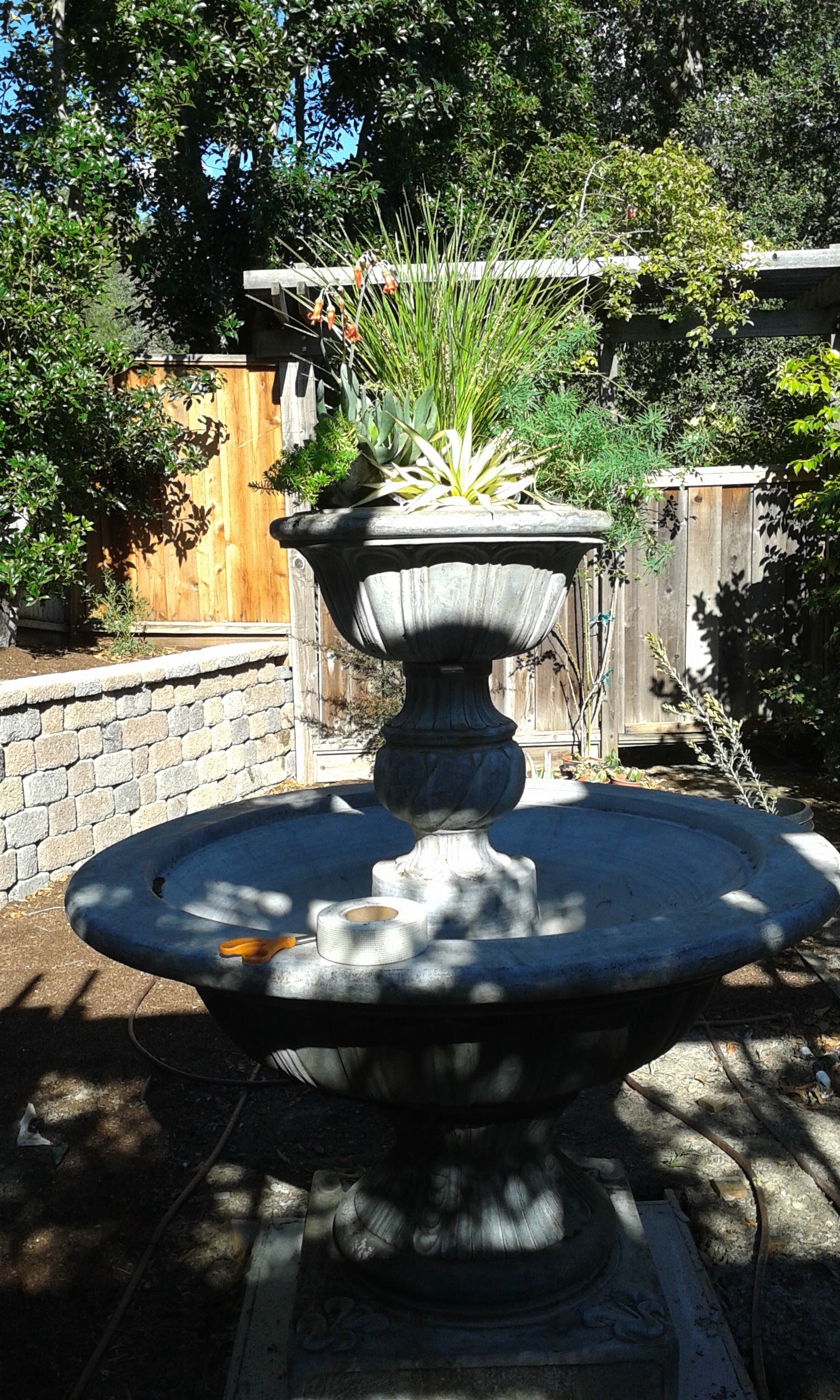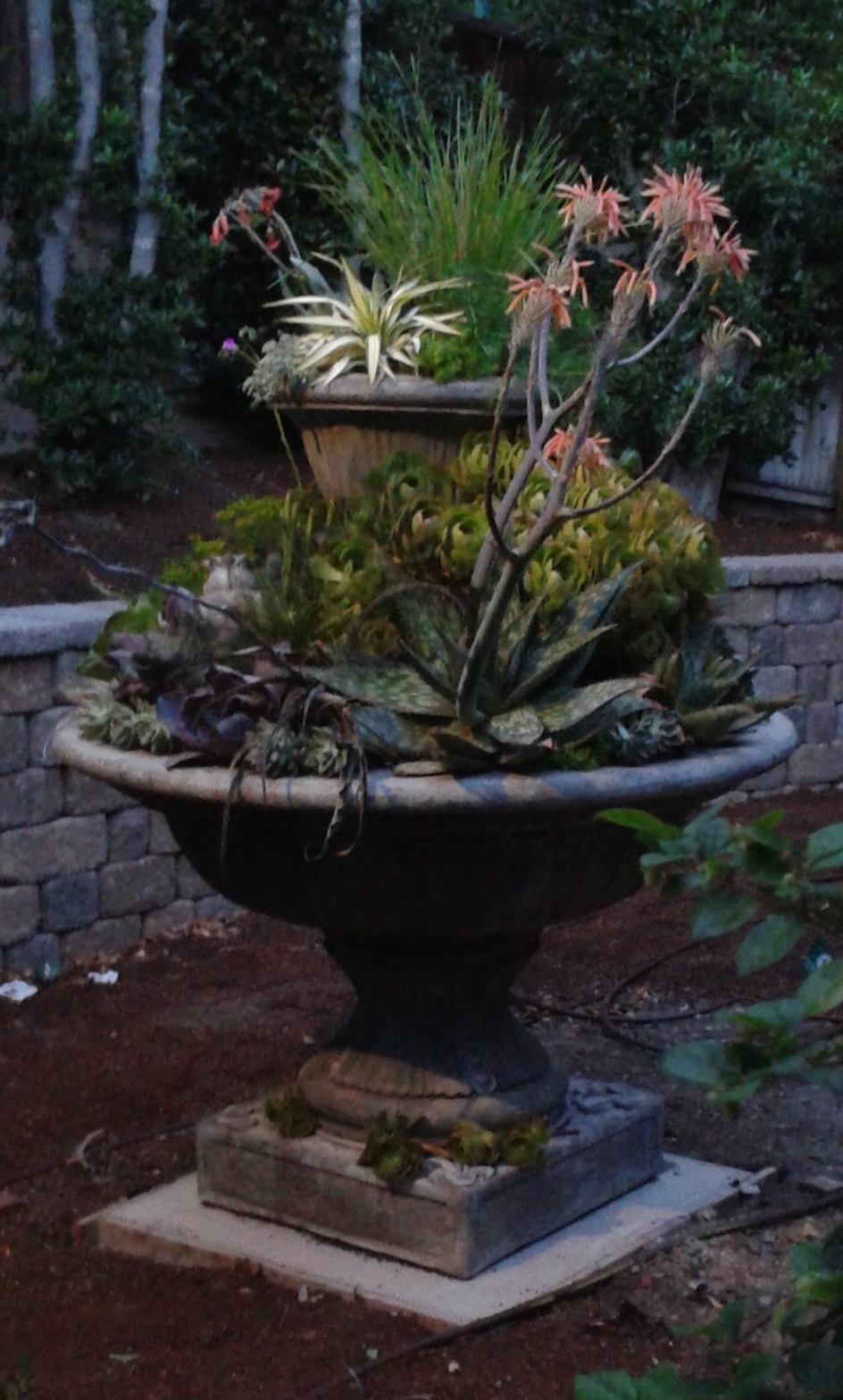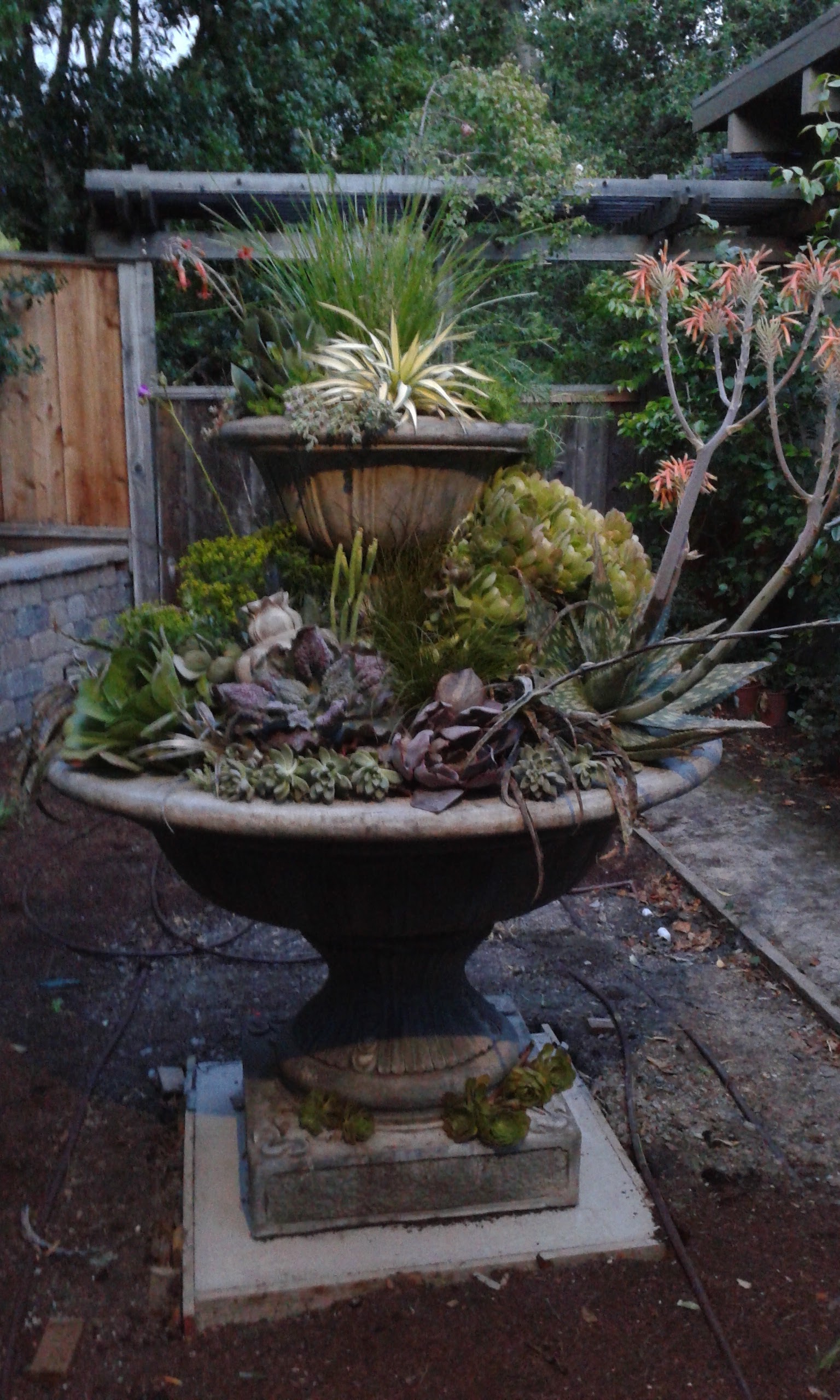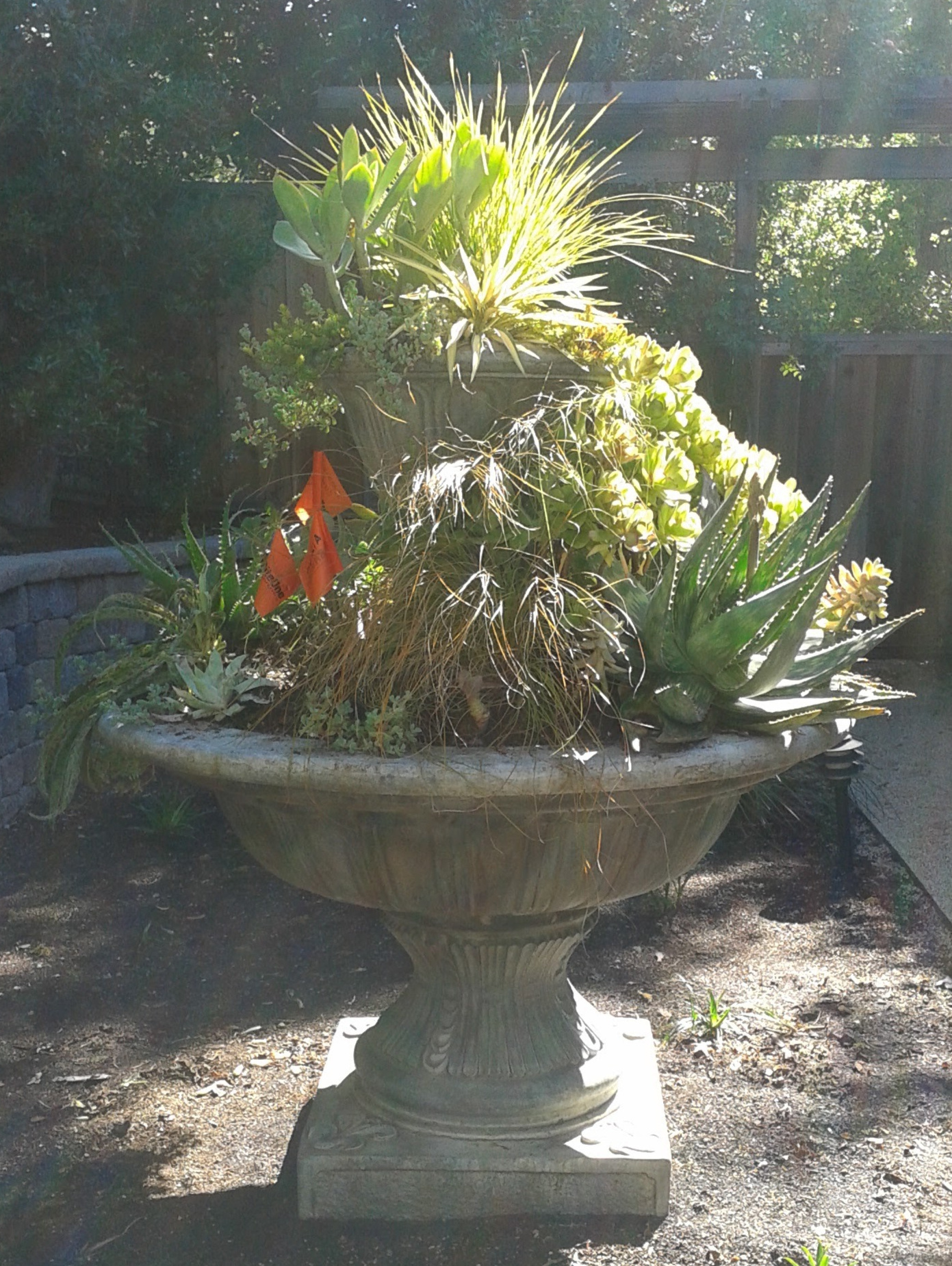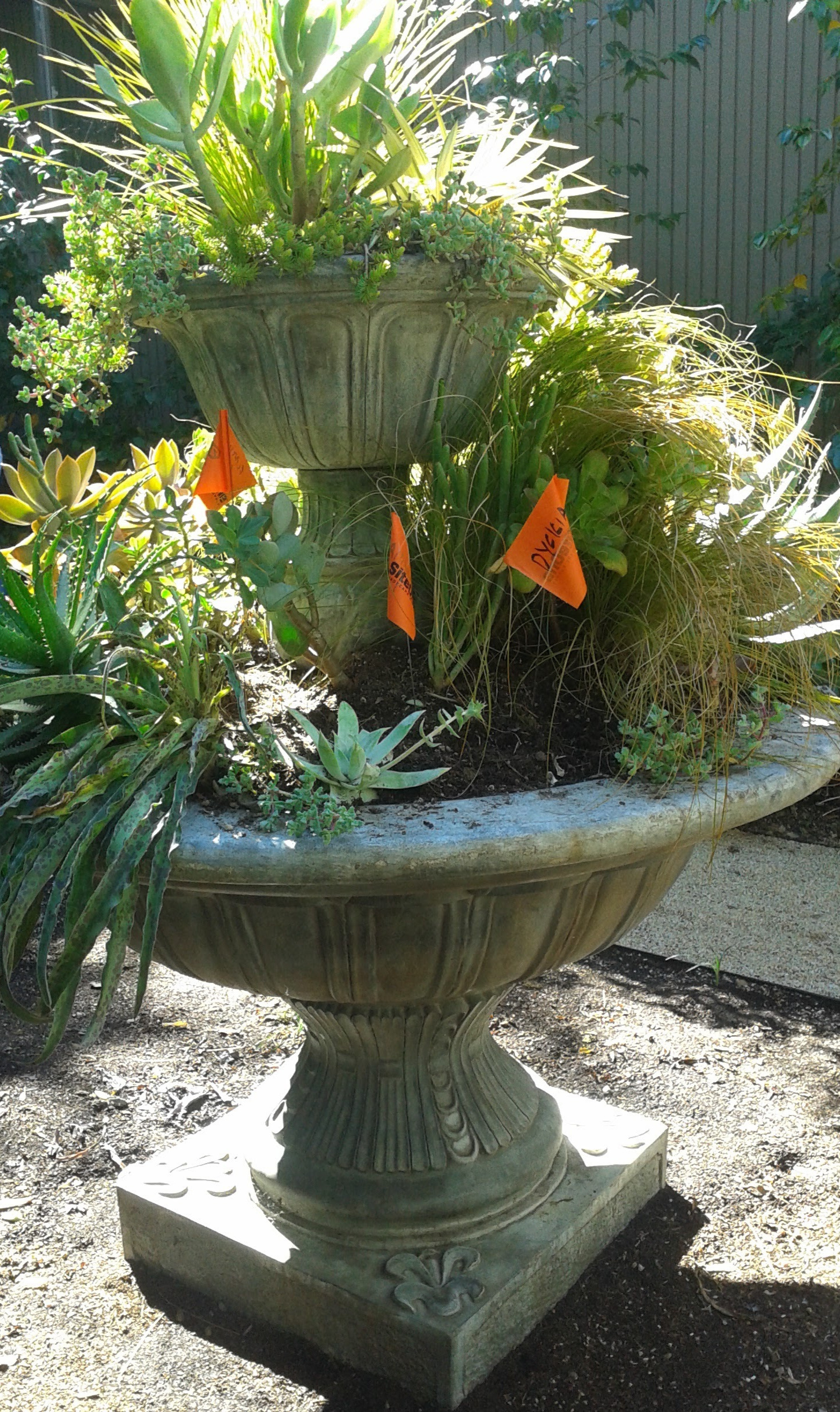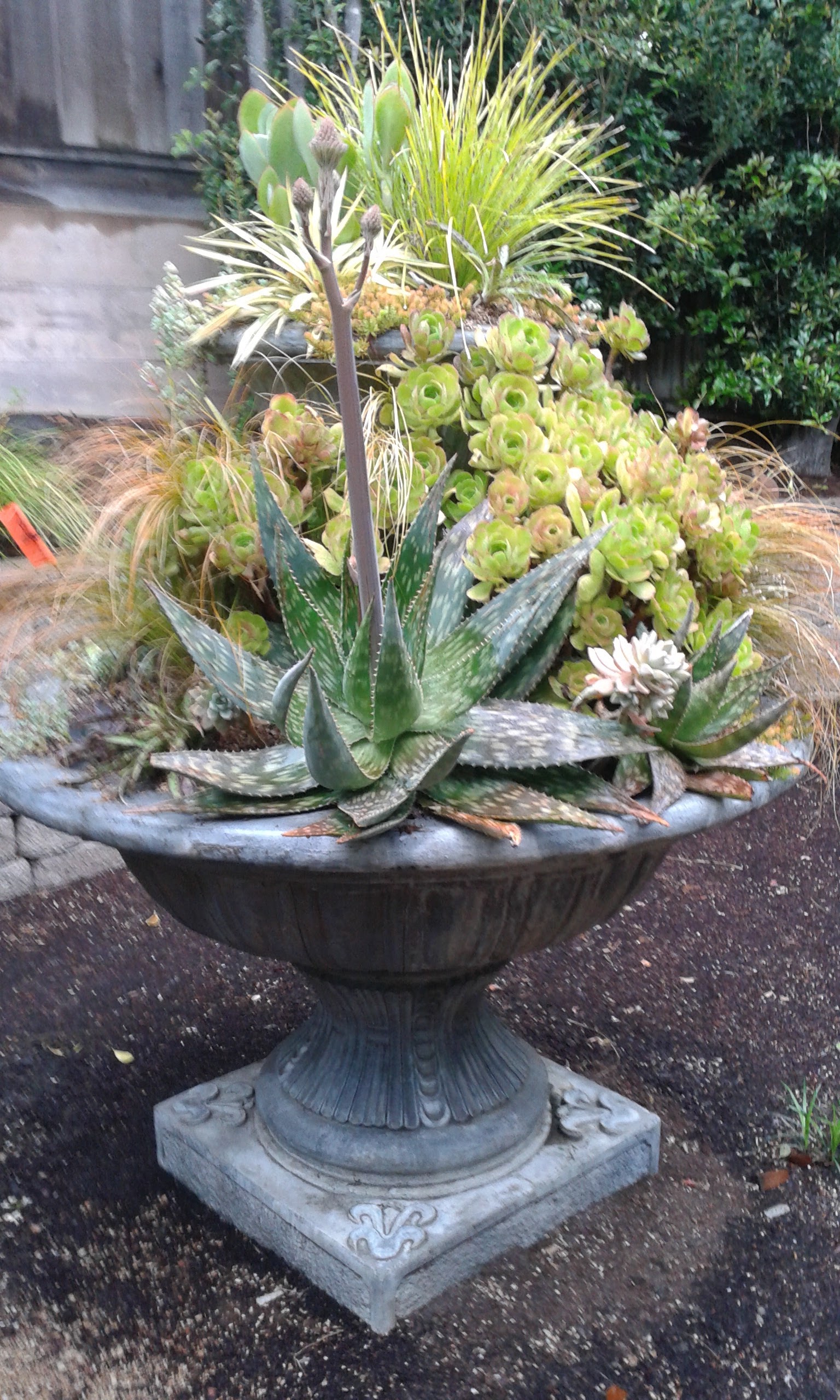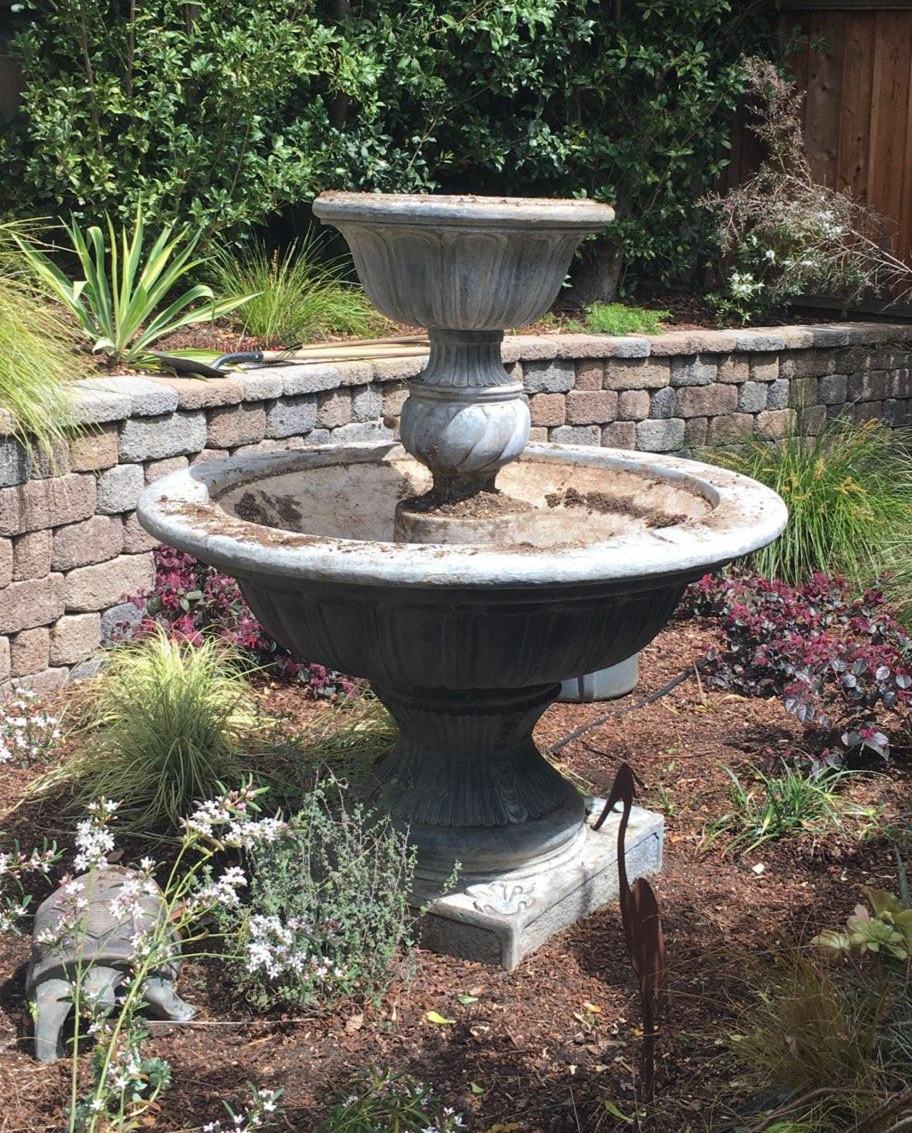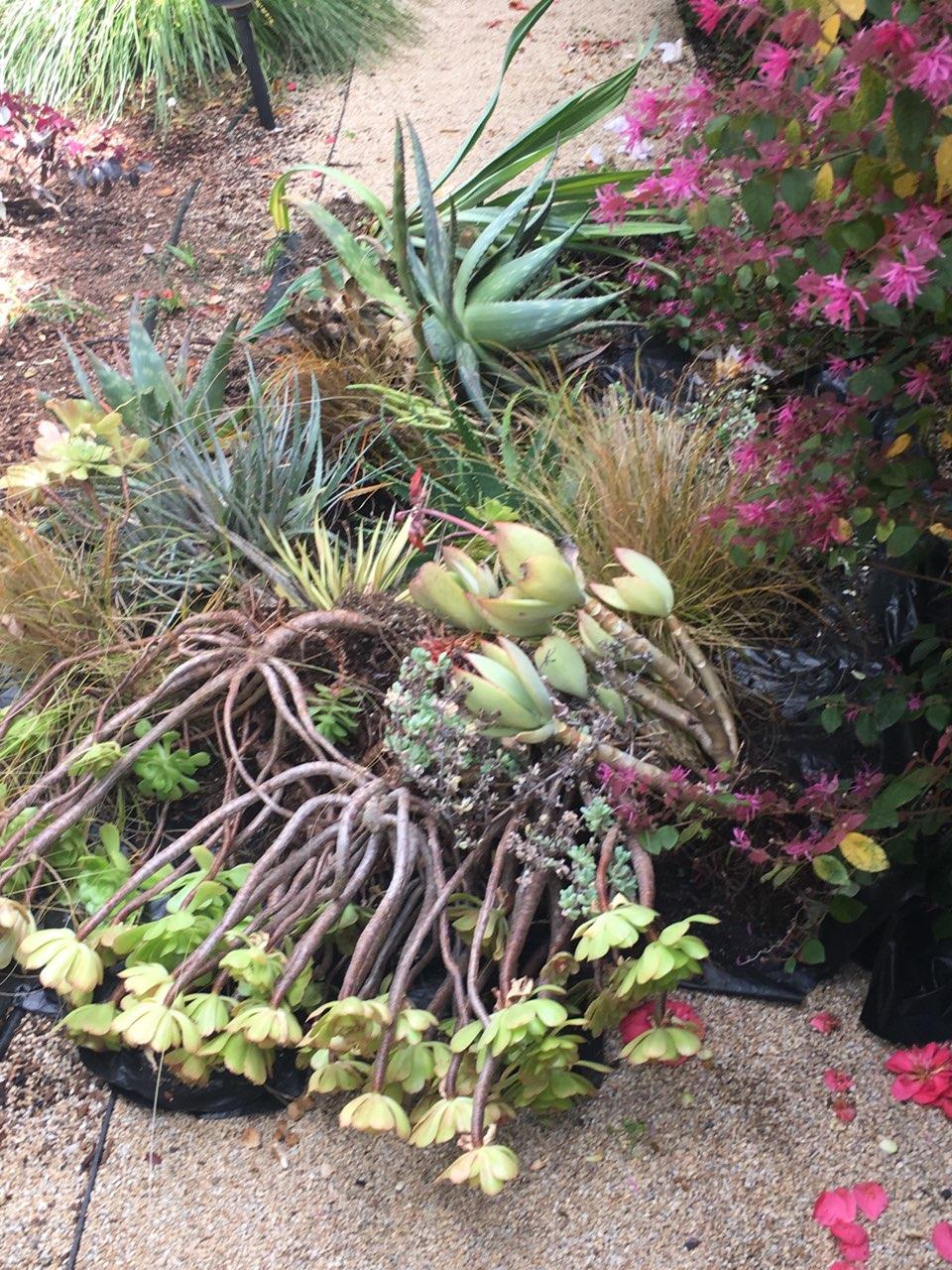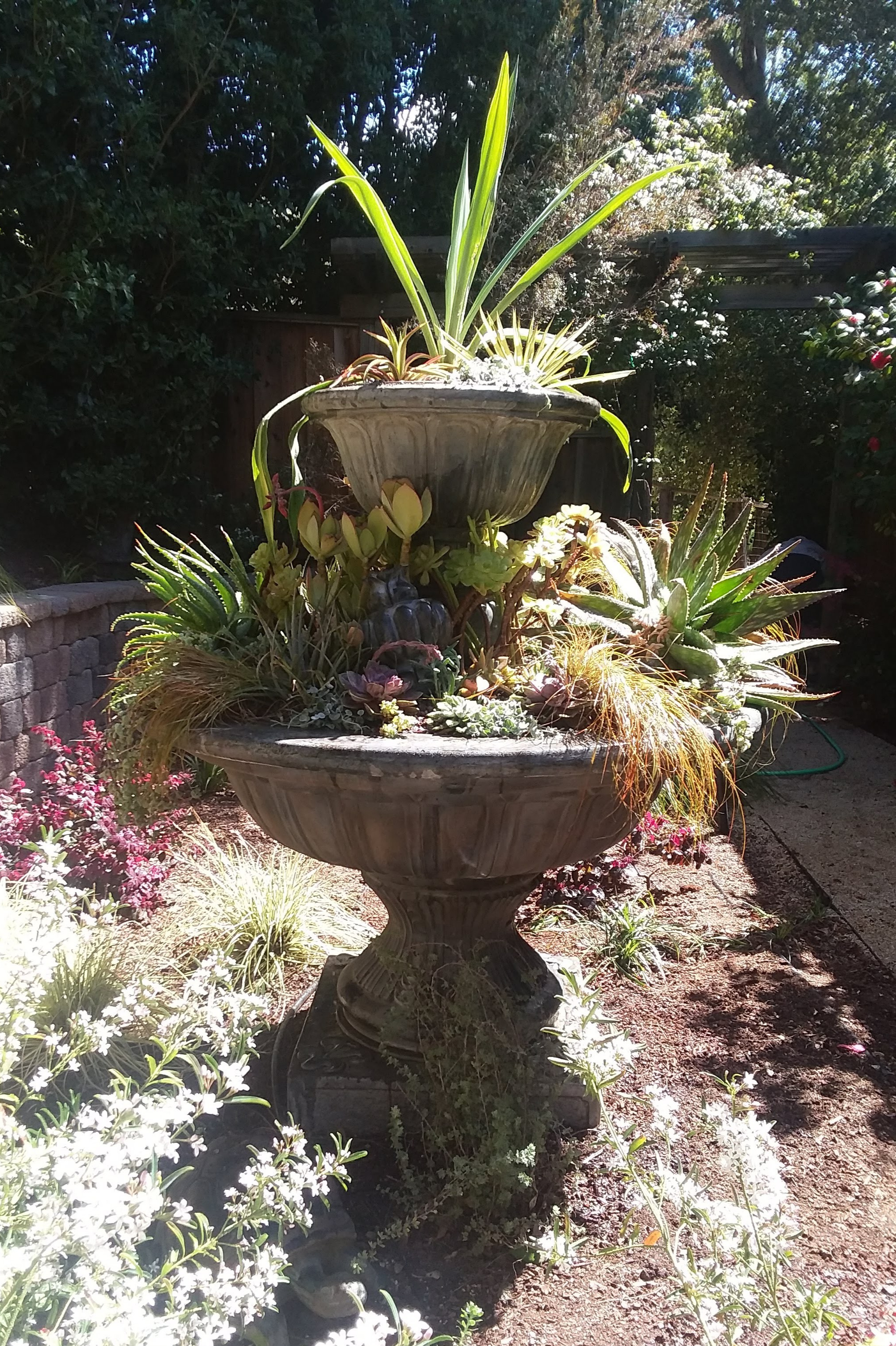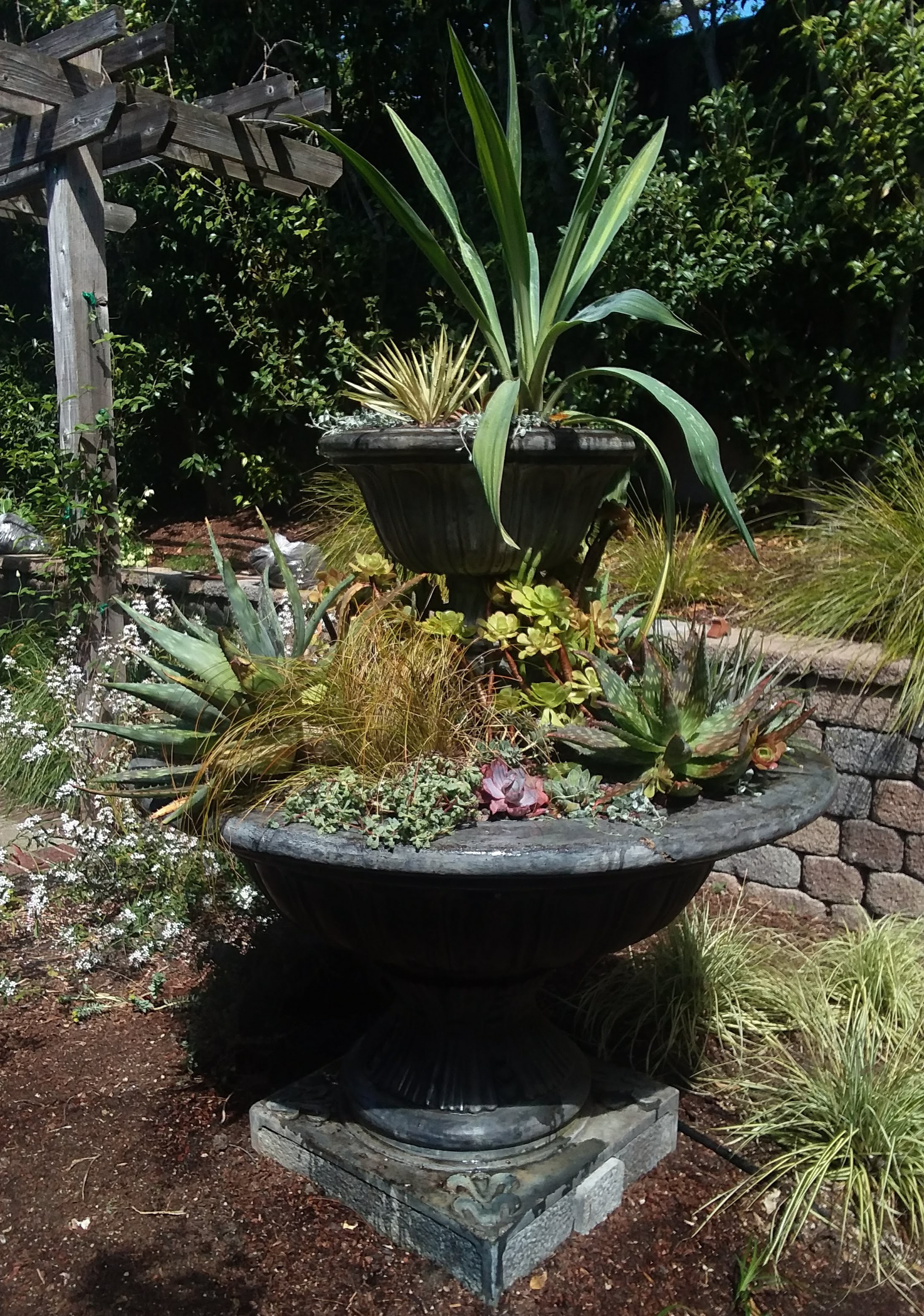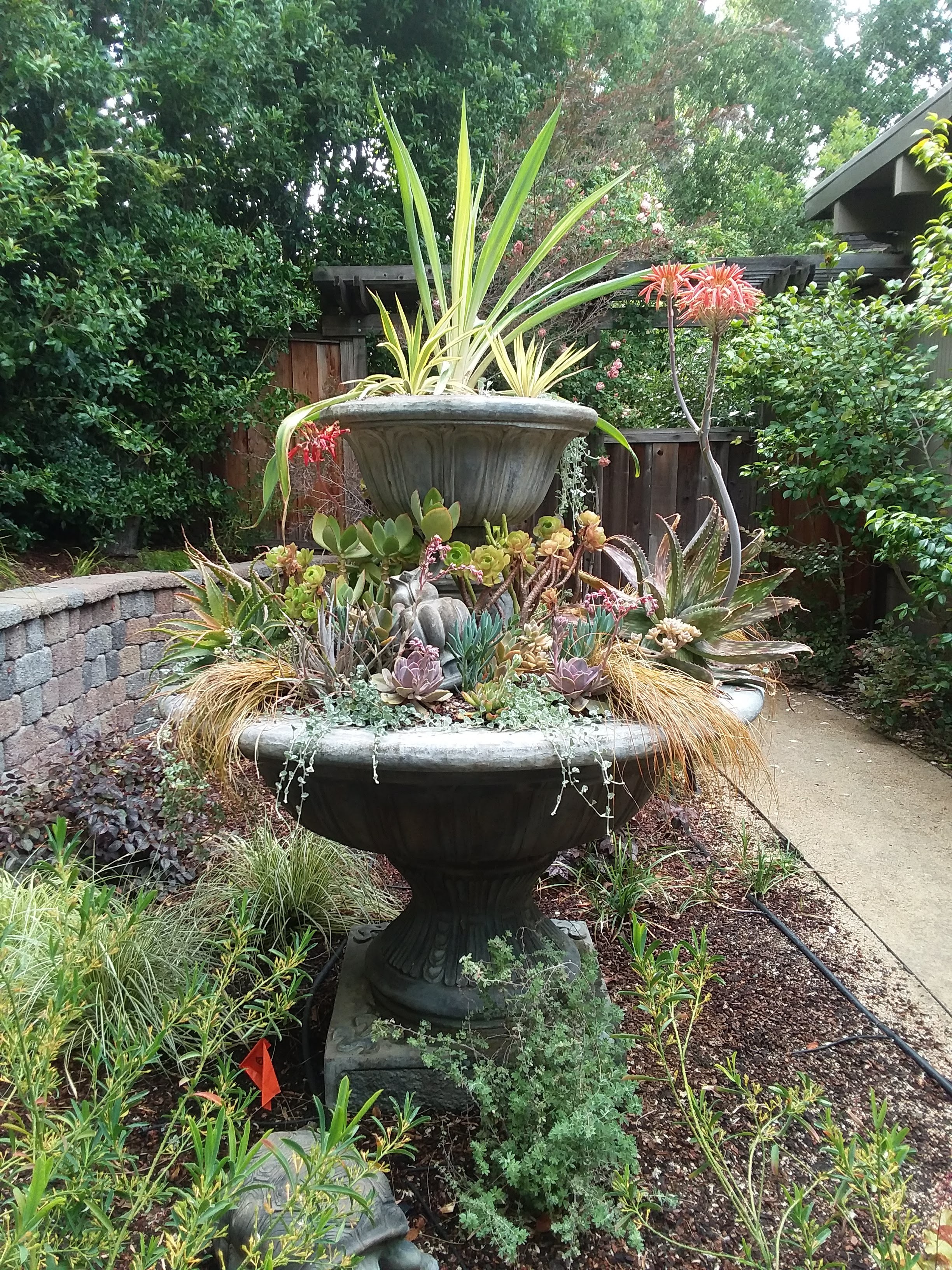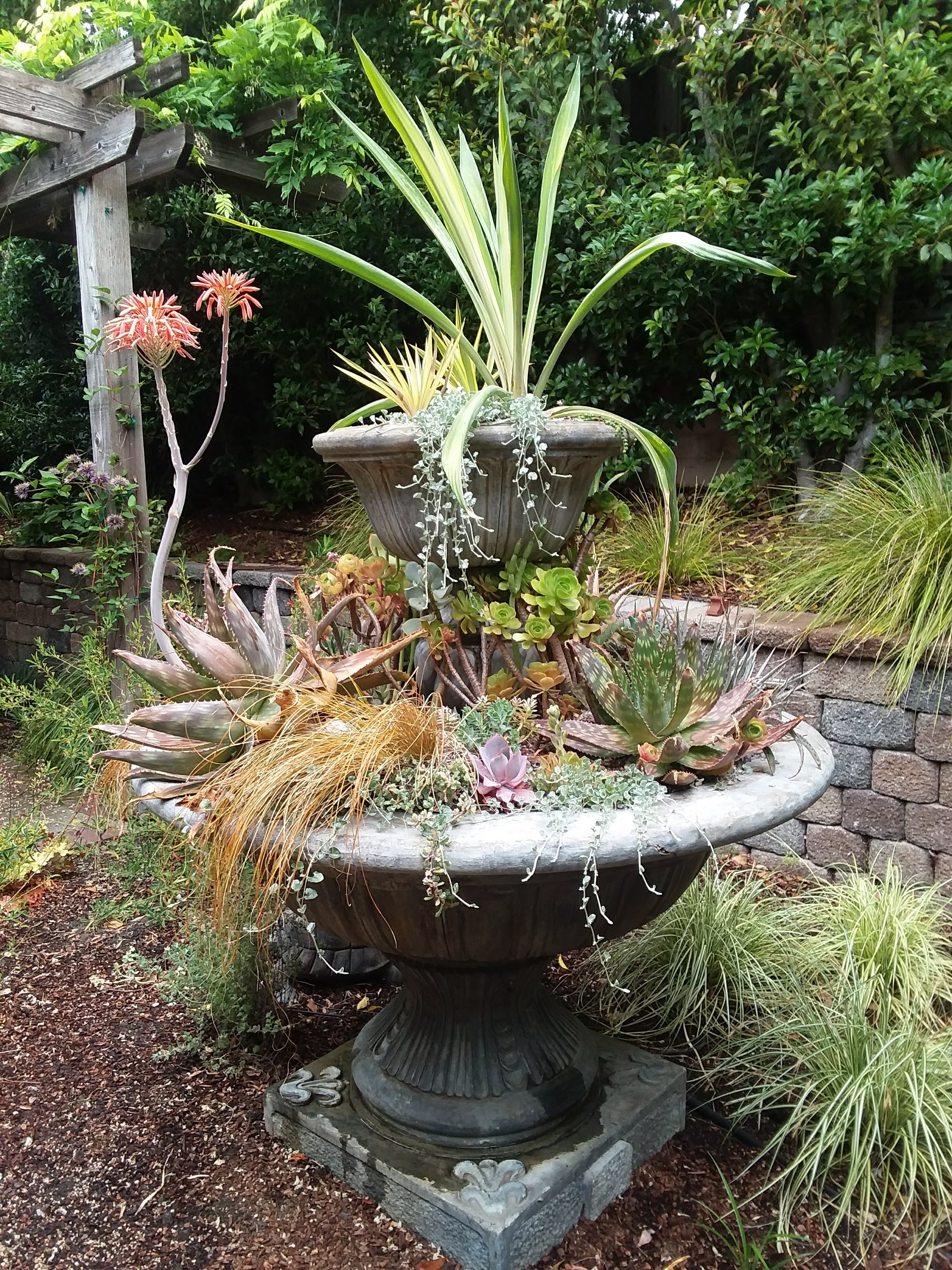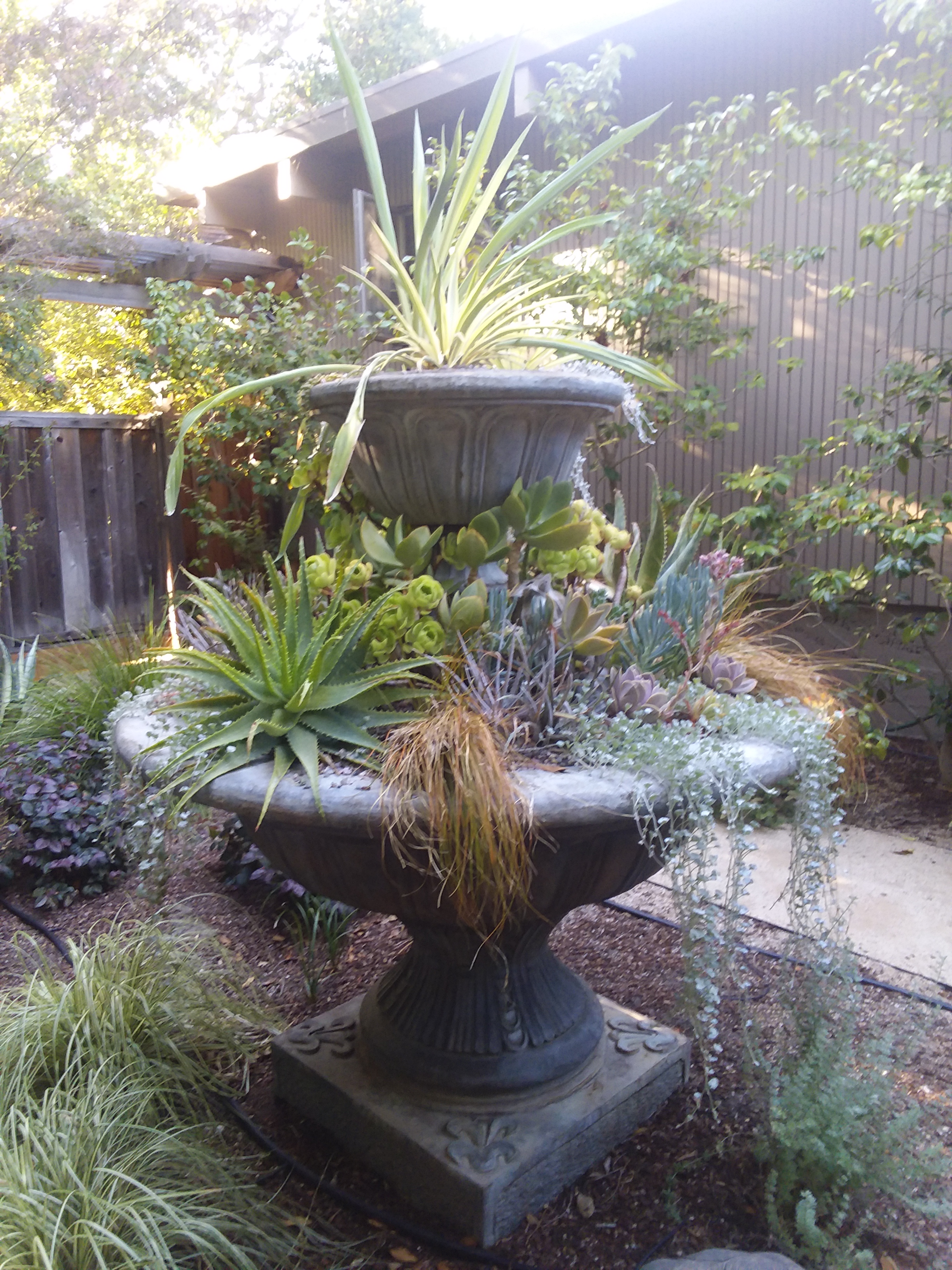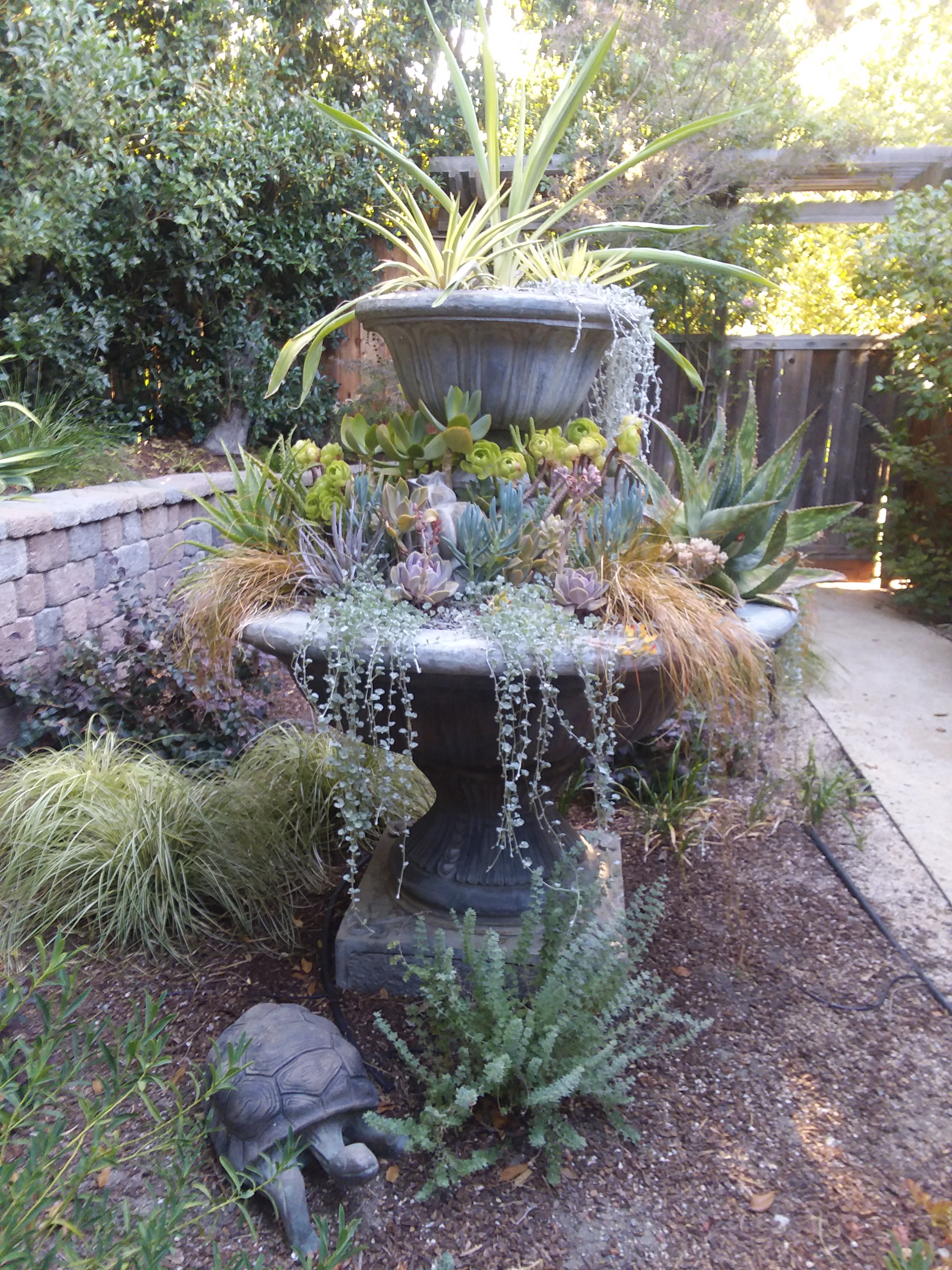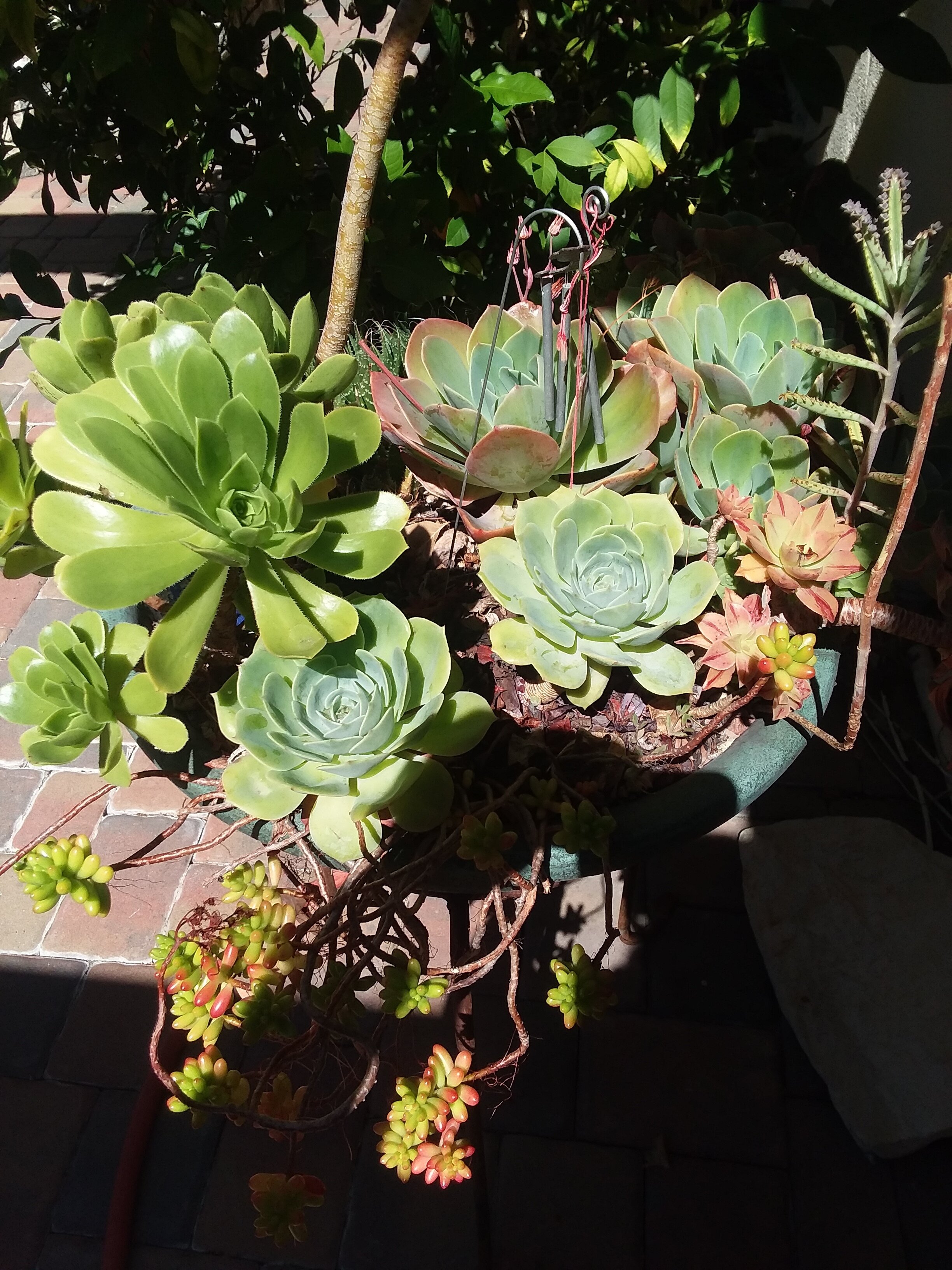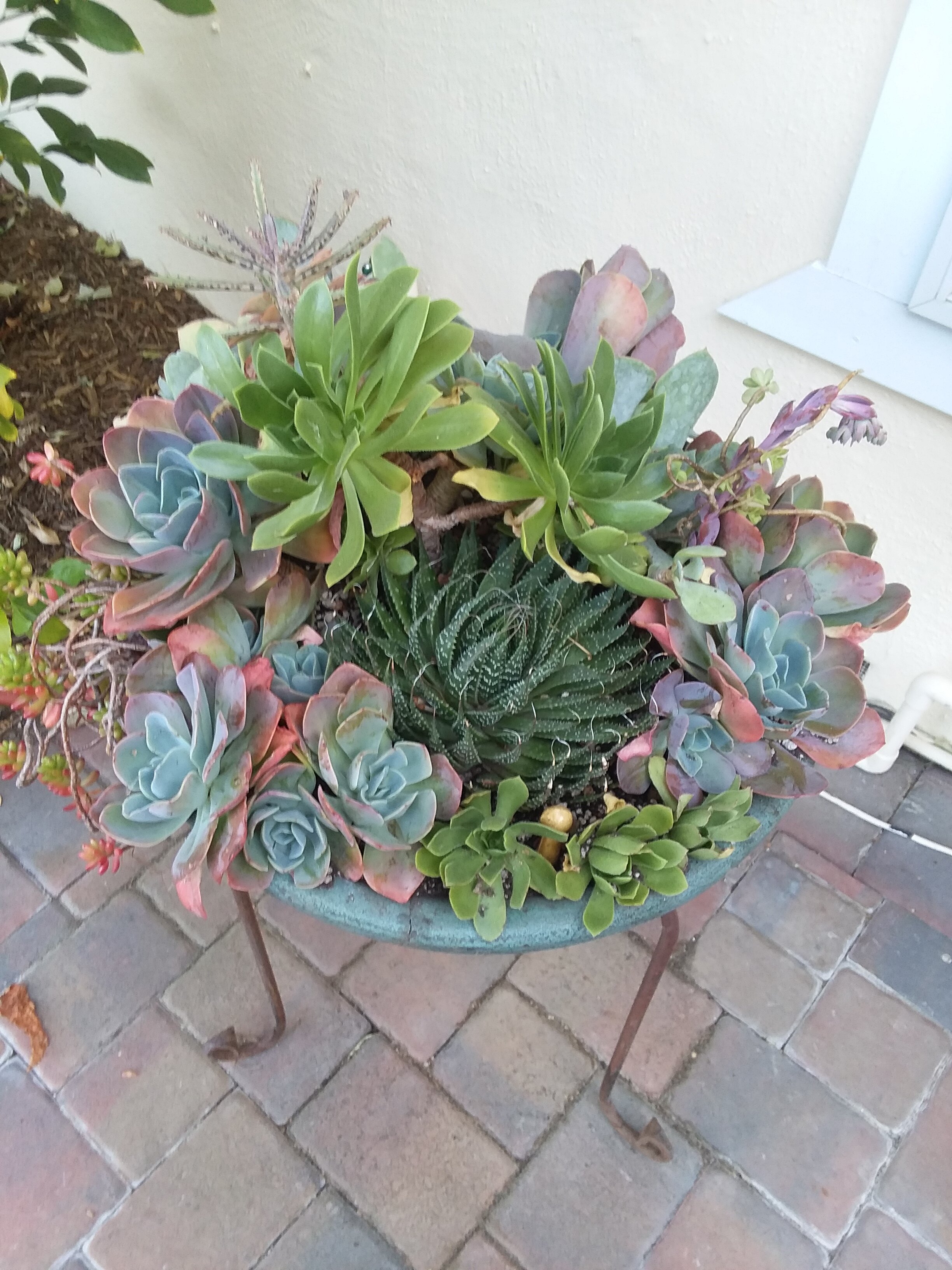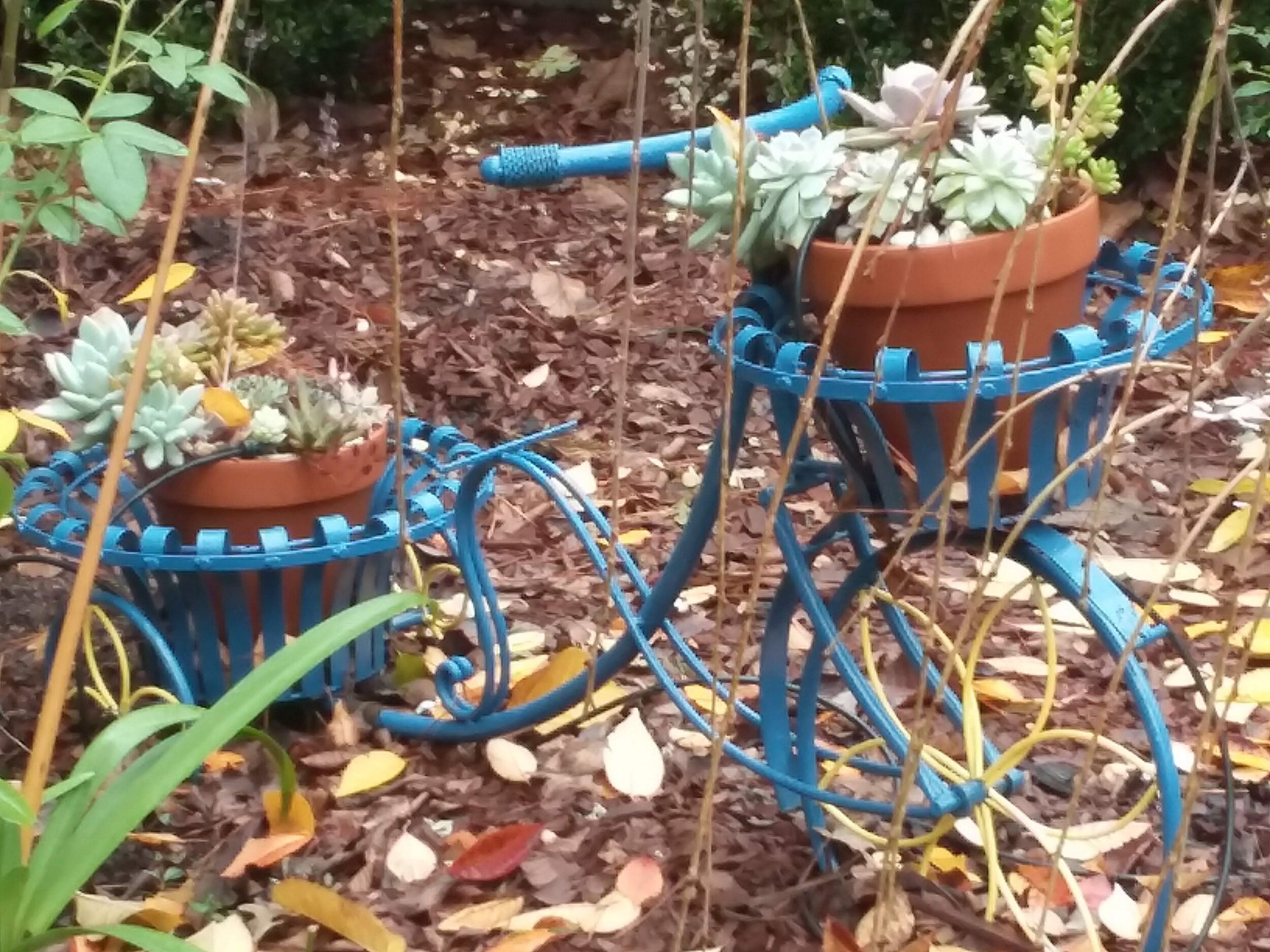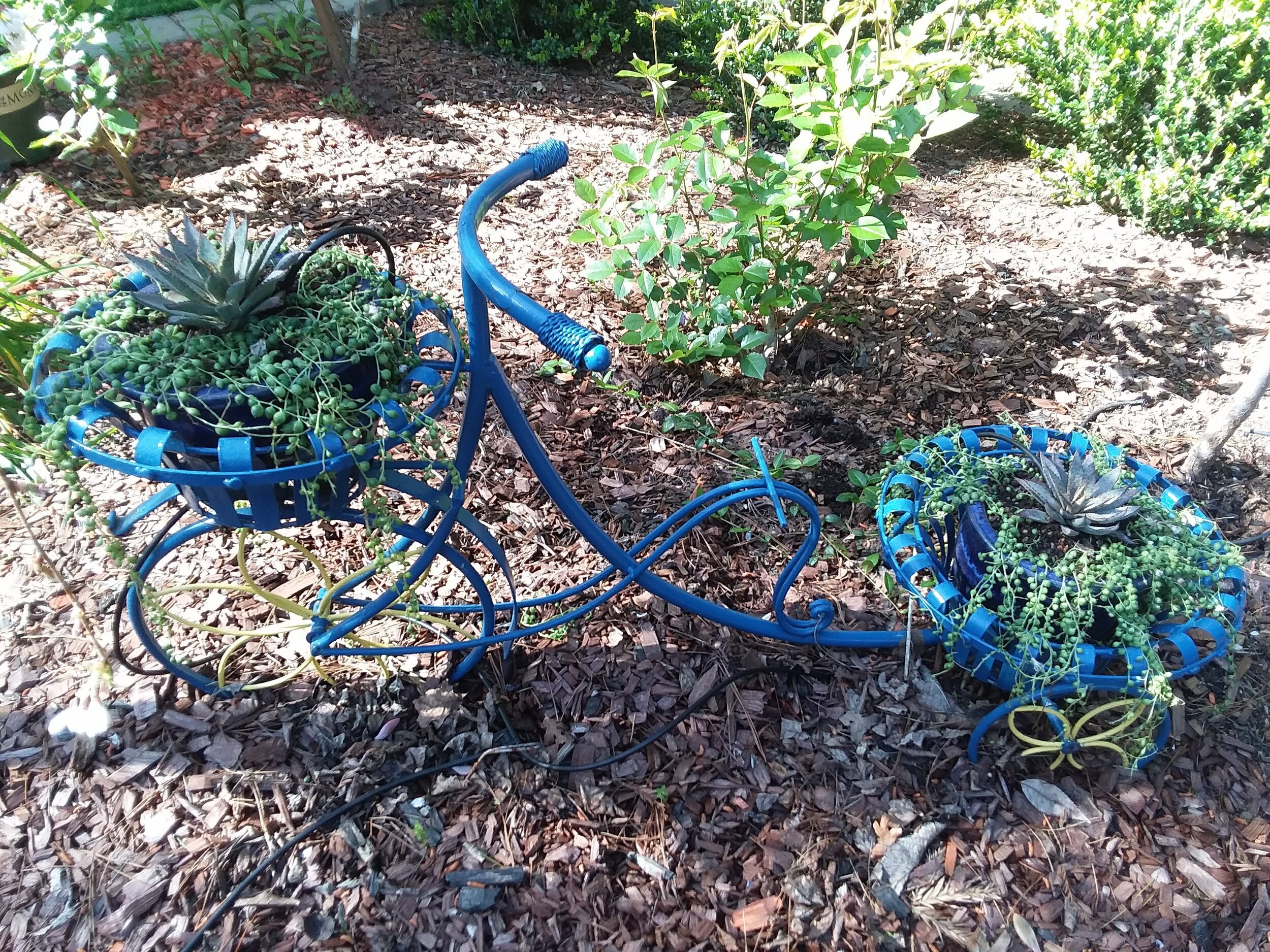Before and After Succulent Dish Gardens
Many of the projects illustrated in this section show the transformation of objects in our lives that have outlived their original design purposes. Succulents have a way of bringing new life to items that would otherwise create cluttered eyesores in our homes or go unnecessarily to a landfill.
This 1947-1954 Chevy Grill was turned upside down and backed with plastic board to create soil reservoirs for the installation of succulents. Wait for it...
1947-1954 Chevy Grill with a new life!
Da da! Here it is, in all its succulent glory.
This old painted copper mailbox was replaced with a new solid copper mailbox and was given a new life filled with succulents.
New Life bursting with succulents!
The old mailbox is currently displayed on the ground next to the new mailbox with a cheery new message.
This approximately 100 year old family heirloom was given a new face lift. This was achieved by sealing the wood handle and planting the metal bucket with a mix of succulent and non-succulent plants that would echo the color of the enamel.
This poolside planted pot went from sad to spectacular in its full sun exposure. This was achieved by replacing the tired Chrysanthemum with a variety of sun-loving succulents pulled from multiple containers scattered around the property that had no visual appeal on their own. Now the pot shouts with glee to “Look at Me!”.
Water Fountain turned Succulent Fountain
California’s 5-Year drought fueled the inspiration for transforming the below water fountain into a stunning succulent container feature - a large container at over six feet in height. The fountain is located at the end of a long walkway that makes a sharp right turn to the homeowners front entry. It was originally planted by The Ruth Bancroft Garden Nursery staff in May 2016. A truckload of mature plants was brought in to source from throughout the planting process. The homeowners were not interested in having juvenile plants installed, which would force them to wait for the plants to grow into the space. They wished to have instant impact. This technique produces a shorter life to the planting. Succulents do not mind being over crowded but depending on the species, they can eventually overpower a container and produce an unbalanced or lopsided effect causing the need to replace them sooner. More frequent pinching or pruning is required to maintain the compact, bushy appearance. Overgrown succulents can become lanky and unsightly. Succulents with more aggressive growth habits can crowd out succulents with more delicate foliage and/or slower growth rates.
The photo on the right above shows the first tier planted with Lomandra ‘Lime Tuff’, Yucca gloriosa ‘Tiny Star’, Cotyledon orbiculata, and Euphorbia ‘Dean’s Hybrid’. Sedum rupestre ‘Angelina’ and Oscularia deltoides are added later.
The second tier is shown here with the plants still in their nursery pots as a “dry run” to know how to arrange them to best highlight their forms, colors and textures. Another consideration when positioning plants is to place them on the side of the container that has the proper light exposure. Some succulents can handle direct summer sun and others cannot. Their tissues will scar and not heal. The more direct sunlight-shy plants are placed on the northeasterly section of the fountain where they will have more protection.
Voila! Finished fountain…the first planting.
A year later in April 2017 a few plants had failed and needed to be replaced as illustrated by the flagged areas in the below photos.
The next two photos were taken the same month following the installation of the replacement plants.
Two years passed after the replacement plants were installed and it was time to empty the entire fountain of all plants and soil and start anew. Succulents that were still healthy and robust were reused. Both basins were filled with newly purchased soil. The bottom left photo shows the fountain completely emptied and the right photo shows the pile of salvaged succulents for reuse.
The next two photos show the fountain in its new found glory in April of 2019.
The Approach
Subsequent Three Months - May through July
Re-vamped Hose Holder Succulent Dish Garden
The following two images show the before and after arrangements of the exact same succulents in the same container. The container was a repurposed ceramic hose holder, which means the only drainage hole was the original hole off to the side of the container that the hose would be fed through from the spigot. This provided an inch or so of space at the bottom of the container where water would accumulate - not ideal for succulents. A drainage hole was drilled into the bottom center of the container after the soil and succulents were removed. The container was then filled with fresh succulent and cacti container mix and the original succulents were replaced in a new arrangement that best complimented their sizes, growth habits, colors and textures.
Blue Bicycle Planter Before and After
The former terra cotta clay pots with several varieties of succulents created a hodge podge and visually busy arrangement. They were replaced with cobalt blue ceramic pots containing just two types of succulents - the same two in each pot - to create a more cohesive and visually pleasing arrangement and to color coordinate with the blue of the bicycle planter. The Mangave ‘Bloodspot’ in the center of each pot will eventually mature to a width of one to two feet extending out to the edges of the bicycle planter holders. They will reach a height of one foot when mature. The spiller succulent, Senecio rowleyanus, commonly known as String of Pearls is a favorite of the homeowner’s.











